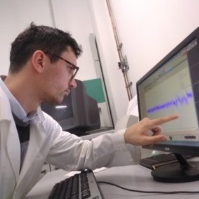Novel Metal-Based Drugs for Anticancer and Antiviral Applications
A special issue of Pharmaceutics (ISSN 1999-4923). This special issue belongs to the section "Drug Targeting and Design".
Deadline for manuscript submissions: closed (31 January 2023) | Viewed by 25981
Special Issue Editors
Interests: metal-based drugs; synthesis; bioinorganic chemistry; anticancer drugs; NMR-based metabolomics; coordination chemistry
Interests: bioinorganic chemistry; inorganic chemistry; NMR; metal-based drugs; chemotherapeutic agents
Special Issues, Collections and Topics in MDPI journals
Special Issue Information
Dear Colleagues,
The discovery of the antiproliferative properties of cisplatin and its subsequent use in cancer treatment has attracted great interest in the family of transition metal complexes. For this reason, researchers have focused their attention on the development of new metal-based drugs as possible candidates for clinical use. These efforts have been mostly devoted to expanding the clinical application of this family of compounds as well as to overcoming the main problems related to cisplatin administration in cancer treatment (such as the development of resistance and its severe side effects).
The coordination numbers and geometries, the different available redox states, and the various kinetic properties of transition metal complexes result in a variety of opportunities in the design of new metal-based drugs.
Moreover, the broad potential of transition metal complexes has attracted great interest from researchers, originating new points of view and new perspectives for their use in a large range of applications, also beyond the original anticancer purposes.
Against this backdrop, this Special Issue aims to collect research articles, comprehensive reviews, and short communications focused on the design, synthesis, and preclinical or clinical evidence of novel metal-based drugs for anticancer and antiviral applications.
Dr. Federica De Castro
Dr. Damiano Cirri
Guest Editors
Manuscript Submission Information
Manuscripts should be submitted online at www.mdpi.com by registering and logging in to this website. Once you are registered, click here to go to the submission form. Manuscripts can be submitted until the deadline. All submissions that pass pre-check are peer-reviewed. Accepted papers will be published continuously in the journal (as soon as accepted) and will be listed together on the special issue website. Research articles, review articles as well as short communications are invited. For planned papers, a title and short abstract (about 100 words) can be sent to the Editorial Office for announcement on this website.
Submitted manuscripts should not have been published previously, nor be under consideration for publication elsewhere (except conference proceedings papers). All manuscripts are thoroughly refereed through a single-blind peer-review process. A guide for authors and other relevant information for submission of manuscripts is available on the Instructions for Authors page. Pharmaceutics is an international peer-reviewed open access monthly journal published by MDPI.
Please visit the Instructions for Authors page before submitting a manuscript. The Article Processing Charge (APC) for publication in this open access journal is 2900 CHF (Swiss Francs). Submitted papers should be well formatted and use good English. Authors may use MDPI's English editing service prior to publication or during author revisions.
Keywords
- metal complexes
- antitumor
- antiviral
- coordination compounds
- metal-based drugs







